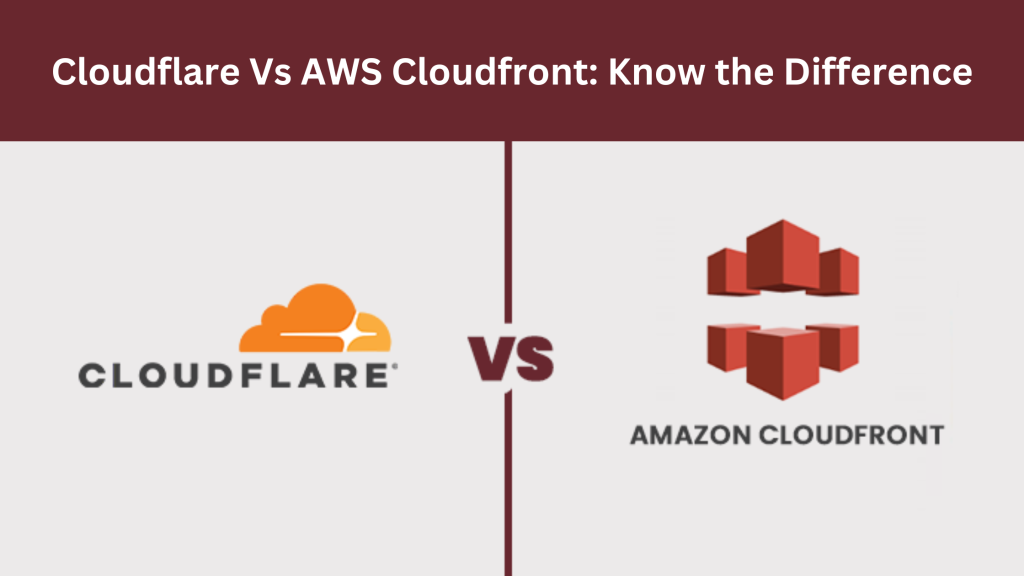Cloudflare Vs AWS Cloudfront: Know the Difference

Content delivery networks back to today’s internet. Whether they know it or not, every internet user uses a CDN when watching videos, reading newspapers, or watching TV. Organizations must select the best CDN platform as CDN solutions become more widely used to securely and smoothly deliver content to end users. A content delivery network is a global network of dispersed servers aiming to accelerate web content delivery. Cloudflare and AWS CloudFront are well-known CDNs that enhance website performance and distribute material worldwide. But which one is right for your business where you need cloud consulting services. This blog will help you understand the difference between the two and choose the right one for your business.
Advantages of Cloudflare
- With an extensive global network of data centers, Cloudflare is a global leader in effective content delivery.
- By offering a solid defense against harmful DDoS attacks and ensuring high availability, Cloudflare guarantees website security.
- Cloudflare provides performance optimization capabilities, including image compression and caching, to speed up website loading times.
- By offering free SSL/TLS certificates, Cloudflare improves security and guarantees safe connections between users and websites.
Disadvantages of Cloudflare
- As a reverse proxy, Cloudflare requires that some of the CDN configurations be transferred to its infrastructure.
- When Cloudflare has network or infrastructure problems, websites that rely heavily on its services gets affected.
Advantages of AWS CloudFront
- Essential Amazon Web Services (AWS) products, including S3, EC2, and Route 53, are integrated with CloudFront to create a complete cloud infrastructure solution.
- CloudFront empowers users with many configuration choices, allowing them to tailor their caching behaviors, SSL certificates, and access limits to their unique requirements. This flexibility lets you control your cloud infrastructure, ensuring it meets your needs.
- AWS CloudFront’s vast global edge location network guarantees faster content delivery and reduced user latency.
- CloudFront is strengthened against large-scale attacks by AWS Shield’s powerful DDoS protection.
- With its extensive analytics and reporting features, CloudFront delivers valuable insights into content delivery performance.
Disadvantages of AWS CloudFront
- It can be challenging to configure CloudFront, especially for customers who are not familiar with AWS services.
- Accurate cost estimation is difficult since AWS CloudFront pricing considers edge location use, requests, and data transport.
Cloudflare Versus Amazon CloudFront
Both Cloudflare and Amazon CloudFront offer considerable benefits for faster content delivery. However, their CDNs operate differently, providing a distinct set of services.
Although both services assist in loading your website content rapidly, Cloudflare’s approach to configuration management is more domain-focused. At the same time, Amazon CloudFront employs distributions at the site level. Cloudflare additionally gives up to a 100% commercial SLA, whereas Amazon CloudFront offers a 99.9% SLA. While this is not always directly related to service reliability, it should be considered when making architectural decisions for mission-critical systems.
Amazon CloudFront utilizes unicast routing, which may give it more control over edge locations and data residency. Cloudflare uses anycast routing to deliver quick, low-latency connections between clients and sites. While Amazon CloudFront takes advantage of Amazon’s worldwide network of 600+ Points of Presence and 13 regional edge caches in more than 100 cities across 50 countries, Cloudflare operates its global network in more than 300 cities across over 120 countries, offering fast service to most of the world.
Further customization based on path or pattern-using behaviors is possible with Amazon CloudFront, which employs distributions down to the individual site level. Cloudflare maintains web properties at the domain level with page rules, which significantly offer more granular control.
In addition to CDN, Cloudflare provides other services, including DNS, edge, compute, and load balancing. On the other hand, Amazon CloudFront is a component of the AWS ecosystem and can be managed via the well-known AWS Management Console and APIs. It also offers direct connections with other services, such as ACM, S3, WAF, CloudWatch, and so on.
Conclusion
Cloudflare and Amazon CloudFront are good choices. The optimal decision ultimately comes down to your unique business requirements. As you can see, the two services differ significantly from one another. Thus, to choose the CDN service that best fits your business model, you should thoroughly and precisely comprehend the advantages and functionalities of each choice. However, if you need more help, you must collaborate with organizations offering cloud consulting services.
With the information mentioned above, you can evaluate which solution better manages surges in website traffic, enhances website speed and functionality, or offers you peace of mind with more robust security for your website.





